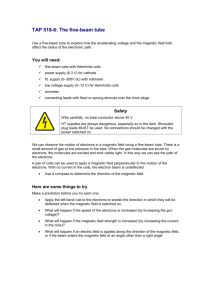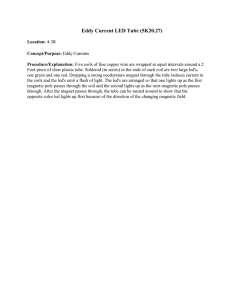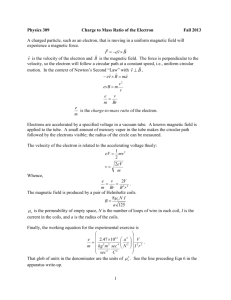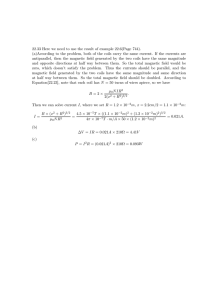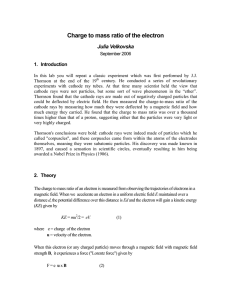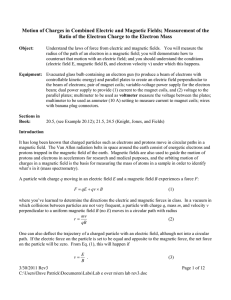TAP 518-6: The fine
advertisement
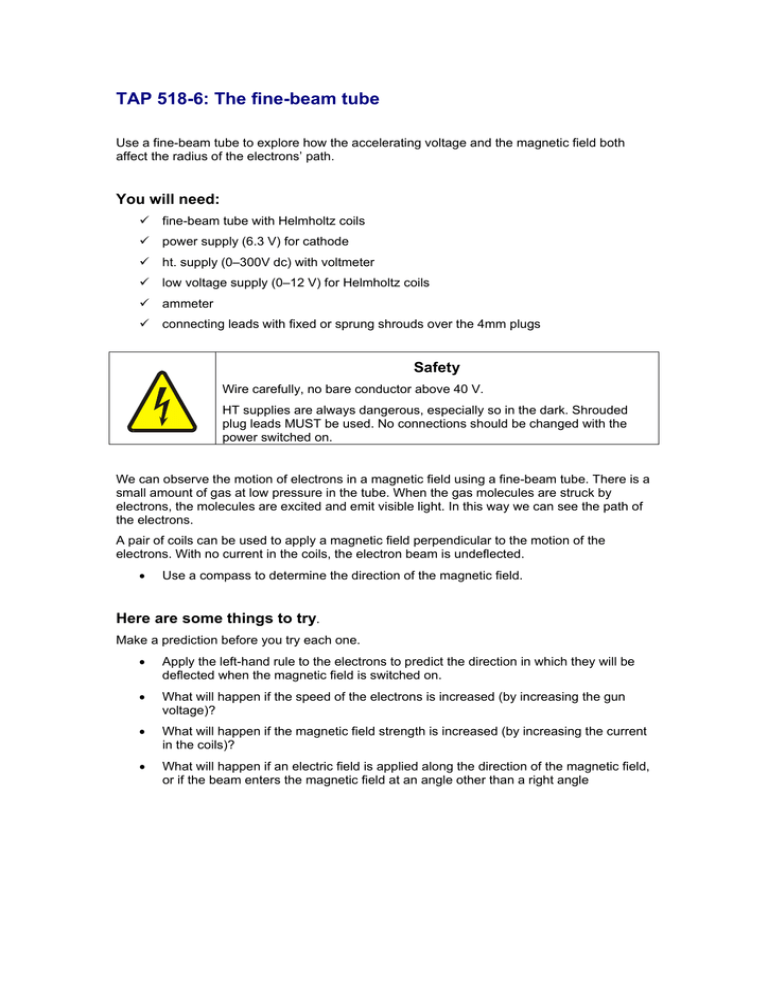
TAP 518-6: The fine-beam tube Use a fine-beam tube to explore how the accelerating voltage and the magnetic field both affect the radius of the electrons’ path. You will need: 9 fine-beam tube with Helmholtz coils 9 power supply (6.3 V) for cathode 9 ht. supply (0–300V dc) with voltmeter 9 low voltage supply (0–12 V) for Helmholtz coils 9 ammeter 9 connecting leads with fixed or sprung shrouds over the 4mm plugs Safety Wire carefully, no bare conductor above 40 V. HT supplies are always dangerous, especially so in the dark. Shrouded plug leads MUST be used. No connections should be changed with the power switched on. We can observe the motion of electrons in a magnetic field using a fine-beam tube. There is a small amount of gas at low pressure in the tube. When the gas molecules are struck by electrons, the molecules are excited and emit visible light. In this way we can see the path of the electrons. A pair of coils can be used to apply a magnetic field perpendicular to the motion of the electrons. With no current in the coils, the electron beam is undeflected. • Use a compass to determine the direction of the magnetic field. Here are some things to try. Make a prediction before you try each one. • Apply the left-hand rule to the electrons to predict the direction in which they will be deflected when the magnetic field is switched on. • What will happen if the speed of the electrons is increased (by increasing the gun voltage)? • What will happen if the magnetic field strength is increased (by increasing the current in the coils)? • What will happen if an electric field is applied along the direction of the magnetic field, or if the beam enters the magnetic field at an angle other than a right angle Practical advice If you measured e/m using a fine beam tube it would be unnecessary to repeat the fine beam tube here unless you require a quick reminder. TAP 413-2: Measuring the charge to mass ratio for an electron To avoid damage to the tube, it is desirable to set this experiment up in advance. At least partial blackout is required. It is also a good idea to cover the back of the tube in black cloth. You will probably get a spread of circles, perhaps due to the field being non-uniform (a Helmholtz pair only produce an approximately uniform field in the central third of the volume they enclose), due to the electrons provided by the electron gun having a range of velocities, and due to random thermal motion superimposed on the velocity acquired from the action of the accelerating pd. This activity is a more quantitative look at the fine-beam tube, and also provides an opportunity to revise ideas about charge, voltage and energy. Students should be able to say that increasing the accelerating voltage will increase the speed of the electrons, and so their orbital radius in a given magnetic field will increase. They should also be able to predict that if the current in the coils in increased, the field becomes stronger, which will steer the electrons into a tighter orbit. You might like to show that tilting the tube sends the electrons into a spiral (corkscrewshaped) orbit; they continue to move with constant velocity along the field direction, while being deflected into circular motion around the field direction. In this context Helmholtz coils are a pair of coils radius R and distance R apart. Safety Wire carefully, no bare conductor above 40 V. HT supplies are always dangerous, especially so in the dark. Shrouded plug leads MUST be used. No connections should be changed with the power switched on. External reference This activity is taken from Salters Horners Advanced Physics, section PRO, activity 27
